We are pleased to announce the 2020 Images of Research winners. Congratulations to all!
Due to social distancing measures for COVID-19, we are creating a virtual exhibit for everyone to enjoy the finalist and semifinalist images this year – stay tuned.
First Place
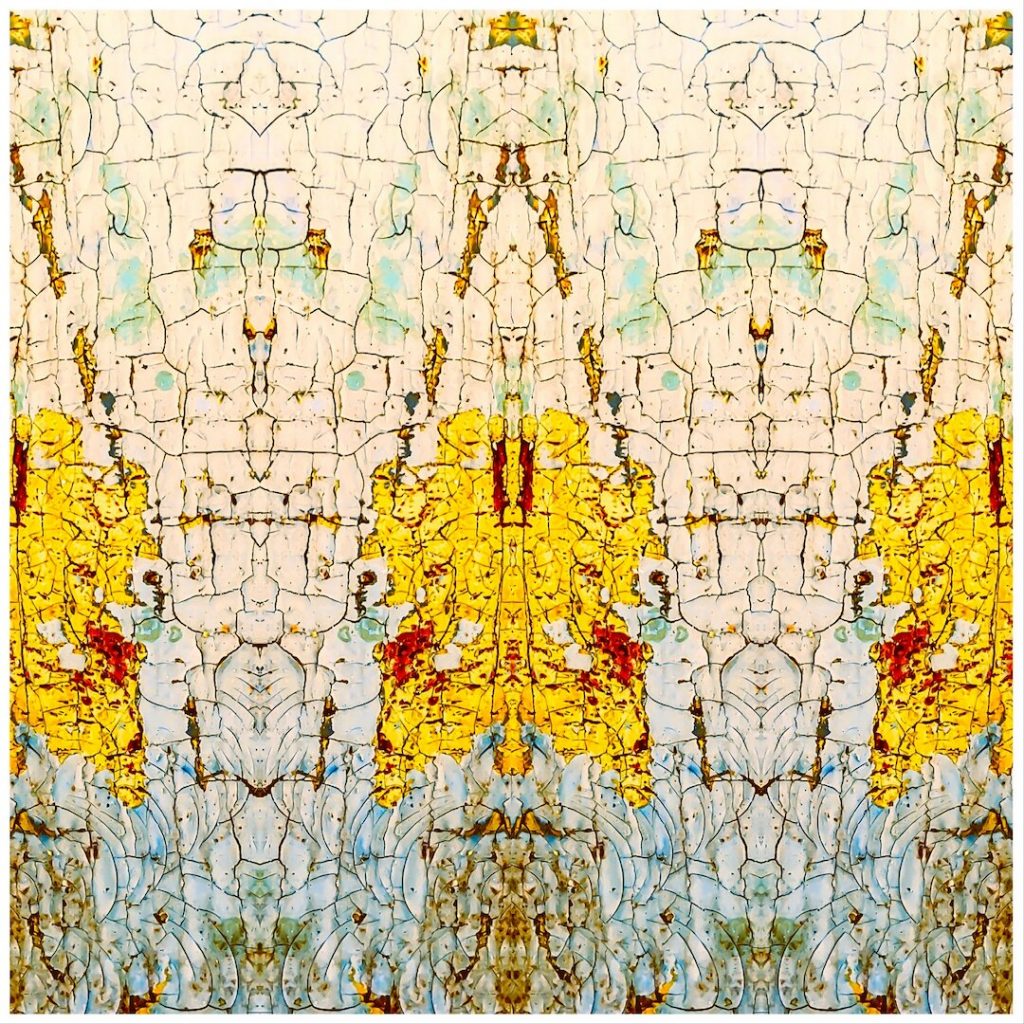
Perspectives of time and adaptation
Anna Magdalena Hubmann
PhD Philosophy Faculty: ALES, Agricultural Food & Nutritional Science
Mirrored close shot of a painted floor at Hewko House, a Ukrainian-Canadian farmhouse. The eroding and cracking paint layers reveal a timeline of different colors and materials used as architectural paints.
The Hewko family arrived in Alberta in May 1899. The construction of their home began in 1917 and marks a combination of Canadian appearance and Ukrainian clay plaster technology for improved insulation as an adaptation to the local lifestyle and harsher climate. Until its move to the Ukrainian Cultural Heritage Village in 2008, it underwent various modernizations and now requires restoration.
Cross-sectional samples and mechanical reveals of paints were collected from almost every corner of the building. Using spectroscopic analyses, 144 paint layers were found and analyzed for their composition and approximate age.
More than 70% of all Ukrainian-Canadian settlement buildings are deteriorated beyond a point where preservation is feasible. The data collected from Hewko House helps to fill the blanks in their historic record to help with accurate restoration.
Beyond an illustration of adaptation to a local and modern building style, these paints reflect how materials science, culture, and creativity need to be combined to learn about the history of their use and performance over time.
Second Place
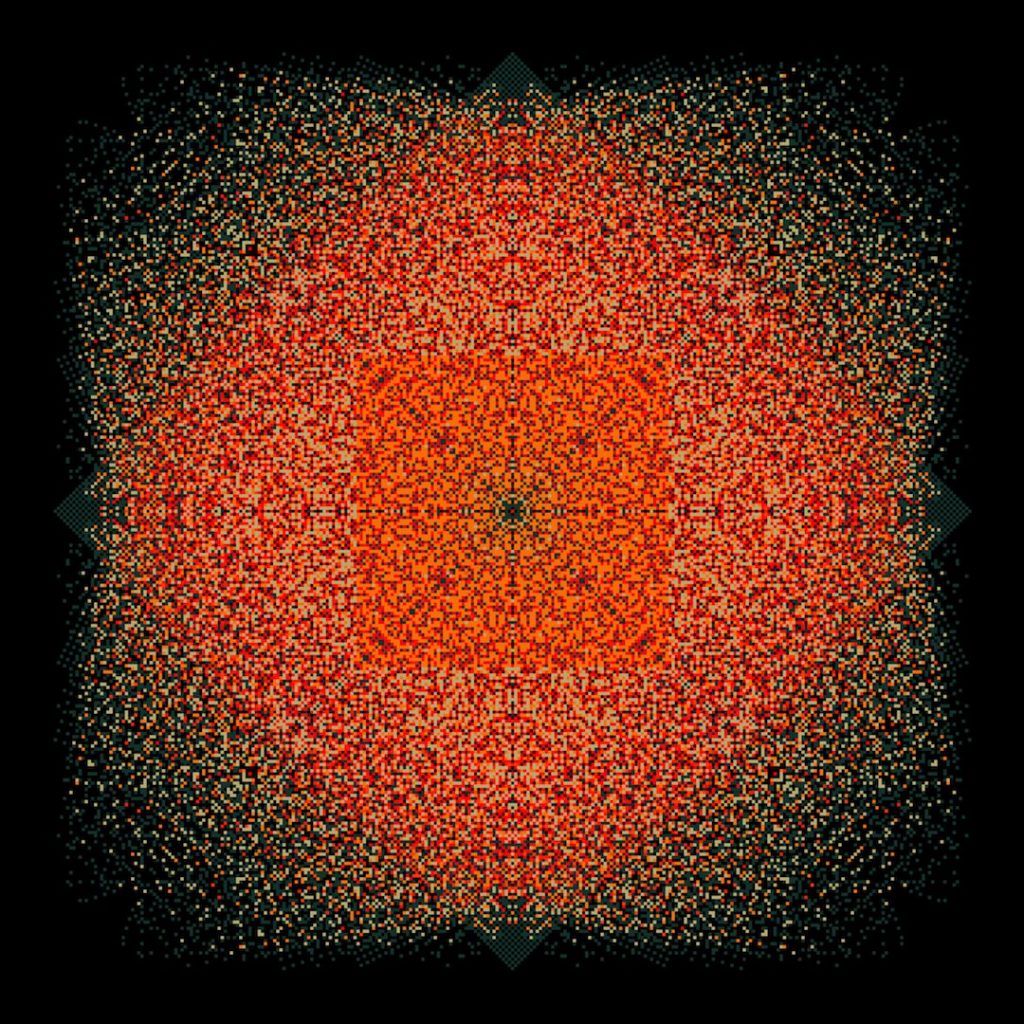
Tobler’s Mandala
Dean Koch
PhD Philosophy Faculty: Science, Mathematical & Statistical Science
Tobler’s First Law of Geography observes that “everything is related to everything else, but near things are more related than distant things.” This phenomenon is important in many areas of science because, if ignored, it can make measurements appear more precise than they actually are.
In the language of statistics, Tobler’s Law is described by autocorrelation: near things are correlated, while those spaced far apart are not. My research looks for ways to correct for this effect, so that scientists can better gauge the uncertainty in their samples.
Autocorrelation can be oriented along a particular direction. My image depicts a sampling design that detects this direction. The warmer (more red) the colour, the more often we sample at that location.
Strange and beautiful patterns emerge when these colours are plotted together. Symmetries amidst the chaos reflect the mathematics of lattices, a topic of fascination among number theorists and crystallographers. My design exploits this theory to make statistical calculations faster – often by many orders of magnitude.
Third Place
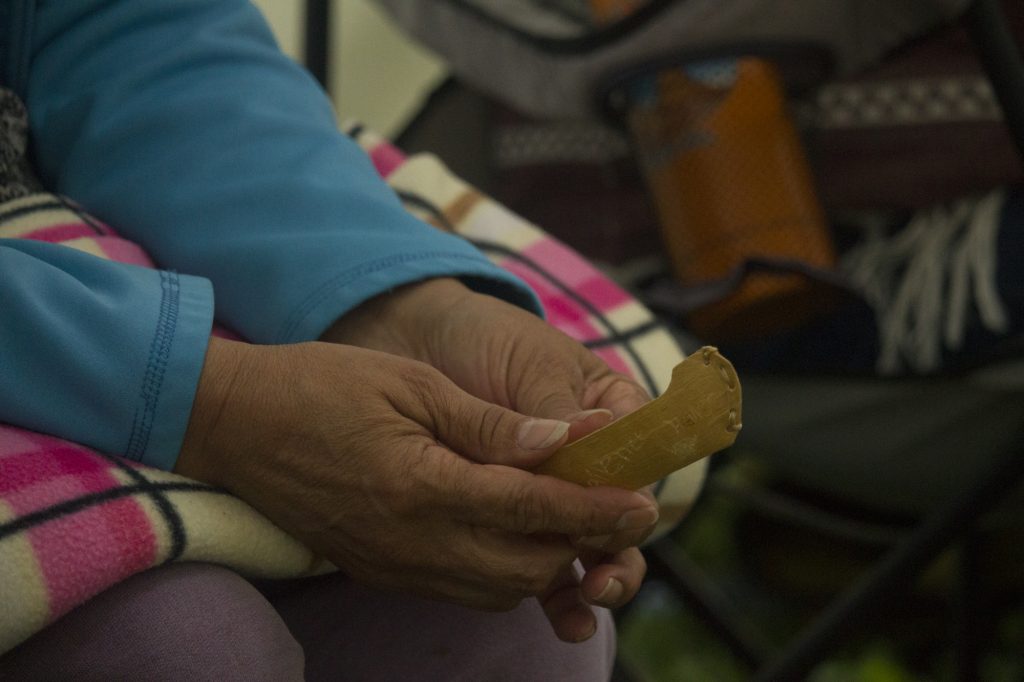
Matilda Lewis with a hand-made birch bark canoe
Kyle Napier
MA, CRSE Faculty: Extension
Dr. Lana Whiskeyjack, nêhiyaw scholar, is conducting the Reconnecting to the Spirit of Language research project. The work involves holding dialogue circles to discuss nêhiyawêwin (Cree language) revitalization. Dr. Kevin Lewis, nêhiyaw scholar, is the founder and coordinator of kâniyâsihk — a series of accrediting year-round on-the-land nêhiyawêwin immersion camps held in Ministikwan, Saskatchewan. Those at kâniyâsihk recently built a traditional birch bark canoe, which has been taken out on the nearby lake.
We held a dialogue circle at kâniyâsihk, and used a small model of the hand-held birch bark canoe as a speaking tool. The holder of the small birch bark canoe is the person whose turn it is to speak. This photo features the hands of Matilda Lewis, who is the mother of Dr. Kevin Lewis, holding a mini-birch bark canoe during a dialogue circle in which we discussed effective nêhiyawêwin language revitalization methodologies in nêhiyawêwin.
Dr. Lana Whiskeyjack hired MACT student Kyle Napier, a fellow nêhiyaw scholar, as a graduate research assistant to assist with this project. He is trained in journalism, but now works at the convergence of digital technologies and Indigenous language revitalization. He took this photo of Matilda Lewis’ hands while recording the dialogue circle.
Honourable Mention
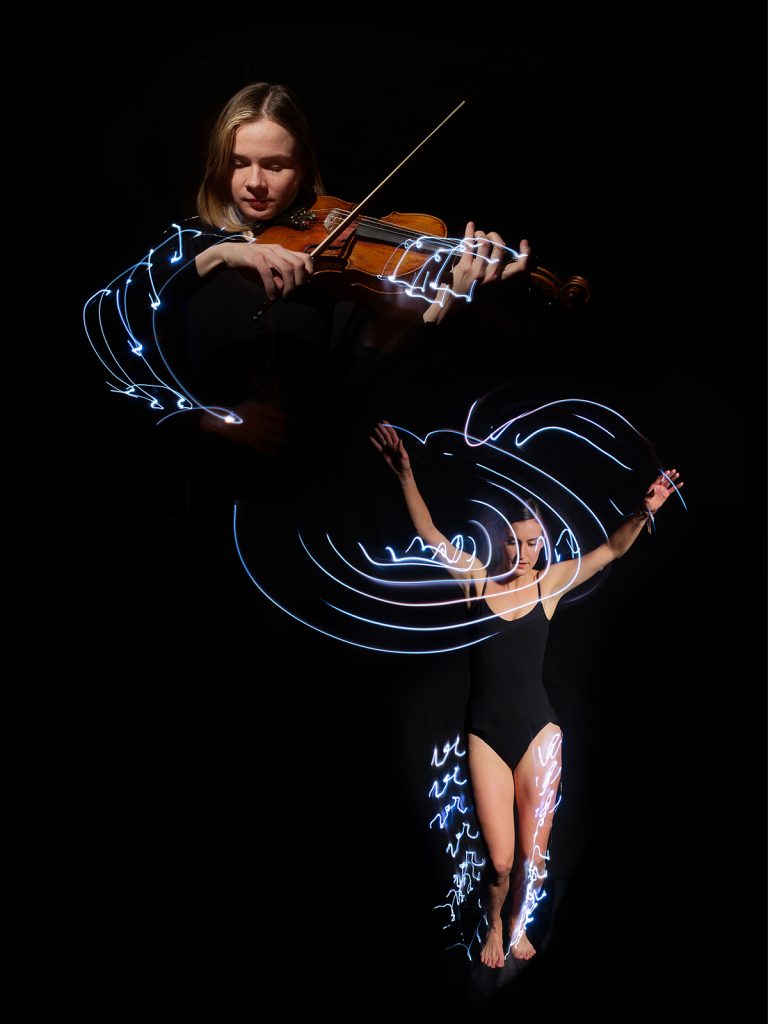
Musical Gesture: Performance as Movement
Viktoriia Grynenko
PhD Music Faculty: Arts, Music
My research as a violinist at the University of Alberta explores the idea of ‘metaphoric intersectionality’ (Duerden, 2007) between violin and dance gestures. This is the idea that physical and music gestures in violin performance can lead to insights into the gestures of dance, and vice versa. Thus, mutually improving the final product of creative collaboration between them.
In order to embody violin and dance gestures through one image, we attached small LED lights to me, the violinist. The lights went on the tips of my fingers and along the right bowing arm from shoulder to wrist. Long exposures (varying from one to eight seconds as we experimented) traced the movement of my hands into a single image.
Then, the lights were attached to a dancer who choreographed dance movements that would respond not only to the music I played, but also to the light patterns created in the photos of my performance. Attaching lights to the dancer’s arms and legs and photographing her in the same way, the dance became a literal and metaphorical echo of the gestural movement of the music’s original performance.
Honourable Mention
Animal Architecture
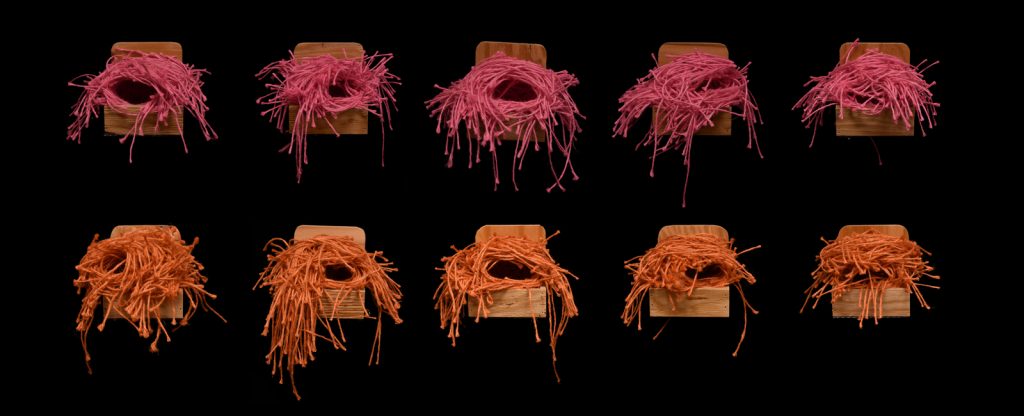
Andres Camacho-Alpizar
PhD Philosophy Faculty: Science, Psychology
How does a beaver build its dam, honey bees their hive, or a bird its nest? We know of many examples of animal architecture occurring in nature, but we understand very little about how animals know what structure to build and how to build it.
Much like we can assign certain buildings or structures to the artist or architect who created them, examining the design of different bird nests allows us to detect whether individual birds have unique building styles. Thus, I aim to determine how birds develop their nest-building behaviour by investigating whether different individuals of the same species have different building styles.
More specifically, I study the role that learning and genetics play in nest building, a behaviour traditionally considered purely instinctual. The nests in this image were built by five different zebra finch males, the nest builder in this bird species. Each column shows two nests built by the same male, one using pink string and another using orange string. By looking at the picture, would you say each bird has his own style?
People’s Choice
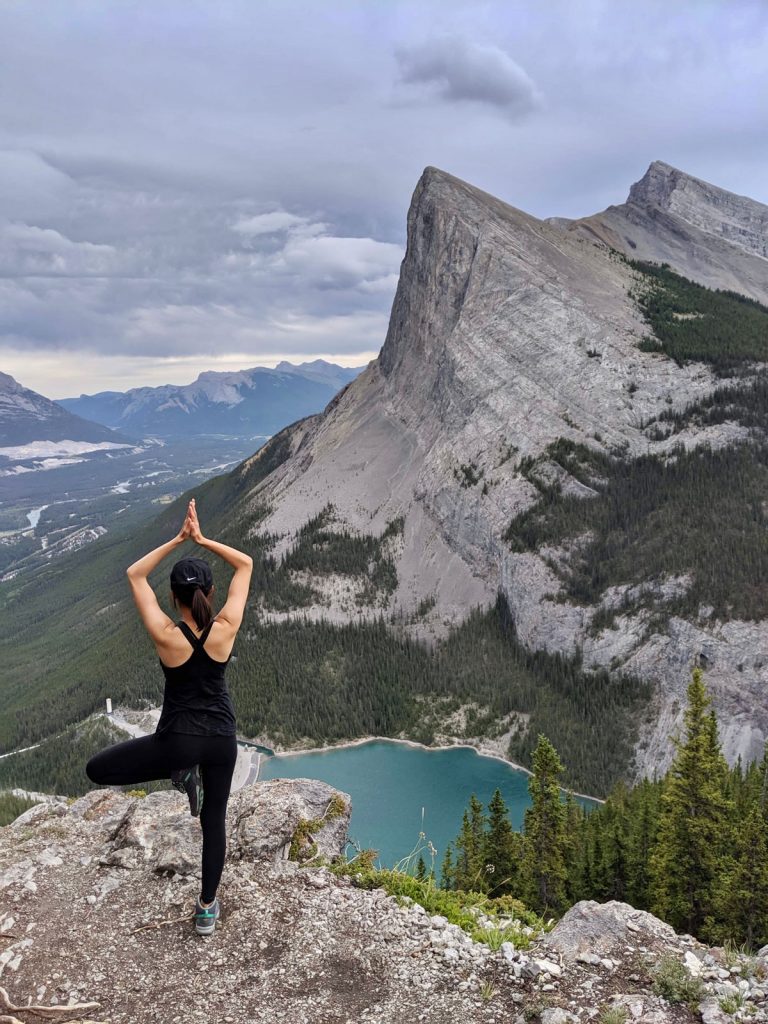
Exercise Prescription for ADHD
Katrina Aranas
MEd Faculty: Education, Educational Psychology
When you climb a mountain or practice yoga, your brain releases several important chemicals in the brain. These chemicals affect focus and attention, which are stunted in individuals with Attention-Deficit/Hyperactivity Disorder (ADHD). ADHD is characterized by inappropriate levels of inattention, hyperactivity, and impulsivity and should be treated as soon as possible as it can cause problems in the home, school, workplace, and with relationships. While there is no cure for ADHD, the two forms of treatment that help manage the symptoms are medication and behaviour management therapy.
However, these treatment options may not be accessible to everyone due to effectiveness and financial constraints, respectively. Physical activity may offer an alternate pathway. The aim of my research is to explore how to best utilize physical activity to improve the lives of individuals with ADHD. Physical activity is a sustainable, cost-effective approach that can be an option for many individuals and families. This image symbolizes the power of the mind and exercise combined. With it, I want to empower individuals with ADHD and their families to conquer their mountains.
